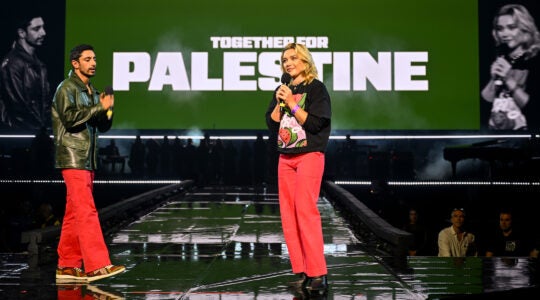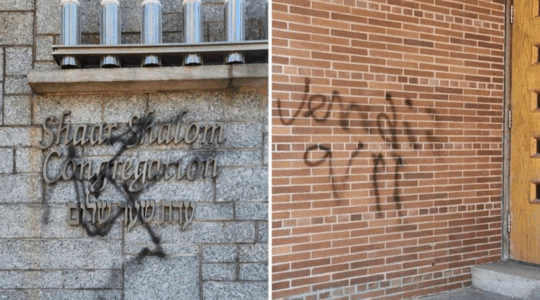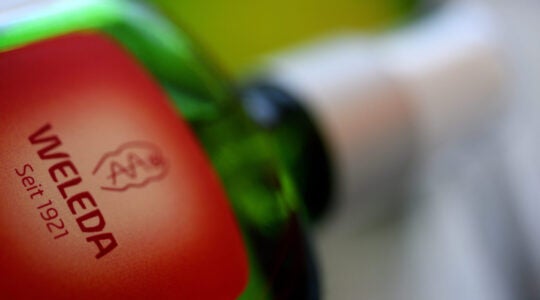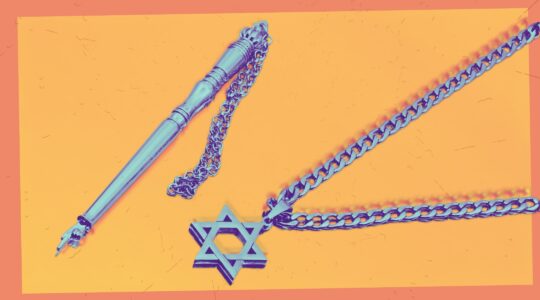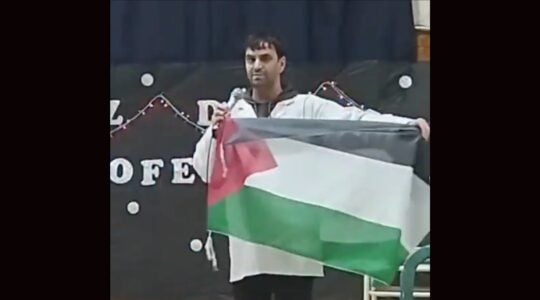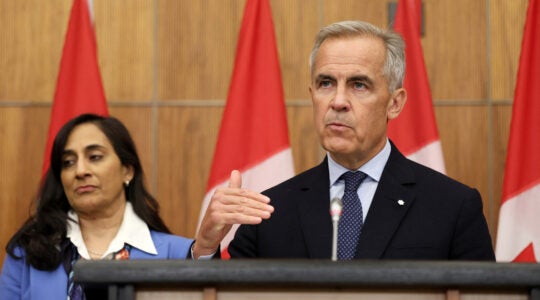PARIS (JTA) – Ever since Mohammed al-Dura was shot and killed at Gaza’s Netzarim Junction on Sept. 30, 2000, some have claimed the boy’s death was staged for prime-time television.
One of them, the director of a small French media watchdog group called Media Ratings, went to court to defend his version of the controversial story.
Now a French judge has ordered the release of video footage that could reopen the controversy.
Philippe Karsenty is appealing a 2006 decision that he slandered state-run France 2 television, whose camerman caught the 12-year-old’s death on tape during the fateful exchange of gunfire between Israeli forces and Palestinians.
Karsenty was slapped with two $1,380 fines – one to be paid to France 2 and one to the station’s reporter – and ordered to pay another $4,000 in court costs when he wrote that the shooting was a hoax, saying it constituted a “masquerade that dishonors France and its public television.”
He says the original trial was a travesty. Some partisan Jewish groups like the Zionist Organization of America and Camera-The Committee for Accuracy in Middle East Reporting in America have lined up behind him, but French Jewish groups have withheld their support.
On Wednesday, an appeals court judge in Paris ordered France 2 to show the court about 25 minutes of raw video footage shot at the Netzarim Junction when al-Dura apparently was shot and killed.
Al-Dura’s shooting death became an instant icon for Palestinian suffering at the hands of Israeli brutality, but the Israeli army, after initially apologizing for the death, concluded after an investigation that the boy could not possibly have been hit by Israeli bullets.
Karsenty called the court’s decision a victory.
“This is only the first step in a victory,” his lawyer, Marc Levy, corrected him.
France 2, whose cameraman in Gaza, Talal Abu Rahma, shot the exclusive footage that was considered a major scoop at the time, was given until Nov. 14 to hand over the video to the court.
Several French and U.S. journalists who have seen the raw footage have indicated the shooting might have been staged by Palestinians.
A decision on Karsenty’s case is expected in February.
It’s the latest twist to a controversial episode that became an instant icon for Palestinian suffering at the hands of Israeli brutality but later turned out to be as murky as the origins of the intifada itself.
Some Israel supporters, among them Karsenty, now point to the incident as a sign of Palestinian manipulation of the media against Israel.
“I feel like there should be a debate going on here in Paris – having nothing to do with me, but with the events themselves – but there is nothing,” Karsenty told JTA.
Karsenty is not the first to question the conventional version of the story, which has Israeli troops firing the rounds that hit the boy and left him to die in his father’s arms.
Subsequent to its apology for the shooting, the Israel Defense Forces found that its soldiers could not possibly have struck the boy from their positions at Netzarim Junction, an ongoing flashpoint for violence between Israeli troops and Palestinian militants.
Karsenty goes even further, maintaining that France 2 TV and its Israel correspondent, Charles Enderlin, staged the incident with the active participation of Abu Rahma. Karsenty relies primarily on journalists who have viewed additional raw footage of the incident and saw Palestinians pretending to be shot, then springing up to replay the same scenes. Such footage would suggest the al-Dura shooting was staged, too.
Others have suggested that France 2 and Enderlin were not involved in the hoax but were duped by Rahma. Enderlin, a veteran journalist and a Jew, was not in Gaza that day and did the voice-over for the shooting story from the West Bank, relying on the footage Rahma provided him.
“I believe the cameraman screwed Enderlin and France 2,” said Luc Rosensweig, the former editor in chief of France’s daily Le Monde.
Rosensweig, who has seen the raw footage, added: “The most plausible hypothesis is that the images of the boy are staged.”
A year ago, a Paris judge determined otherwise, finding Karsenty guilty of slander. But Karsenty says last year’s trial was bungled.
“I went to court with experts offering testimony and analysis,” he said, but the judge “asked no questions about anything.”
Karsenty said the attorney for France 2 handed the judge a letter of praise for the public television network from President Jacques Chirac, which mostly brought the trial to an end.
“The court criticized the television for not showing up and then decided in its favor,” Karsenty said. “This time I have more evidence to present and Chirac is no longer president. ”
More than anything else, Karsenty and his supporters wanted the court to order France 2 TV to release the raw footage of the incident. Among others, the IDF sent a letter to France 2 demanding the footage be released.
Morton Klein, the Zionist Organization of America’s national president, sent France 2 a similar letter.
“We’re not taking the position that al-Dura’s alive; it’s possible he’s alive,” Klein said. “Those who have seen the additional film say you see his head pick up and look around. This is not likely of a person who’s dead.”
France 2 dismisses the claims.
“Frankly, these hearings are of little importance,” said its communications director, Christine de la Vena. “Enderlin is a top professional journalist and the images are real.”
“Everyone has forgotten about this case except this man in the hearing and a couple of others who refuse to give it up. Only in France could a couple of individuals cause so much trouble.”
Several U.S. news outlets have run stories about Karsenty and the al-Dura controversy, including The New Republic and The New York Times. Some have compared the al-Dura controversy to the infamous Dreyfus case, when it took 12 years to prove the innocence of the French Jewish army captain Alfred Dreyfus. Others have called the al-Dura case a classic blood libel against the Jews.
Among journalists in France, Jewish or not, few seem to be buying Karsenty’s story.
“The problem here is Karsenty himself,” said Stephane Bou, who has written on the subject for Charlie Hebdo, a satirical political weekly. “He is known here for being obsessed with international plots against Jews and against Israel.”
Karsenty represents something of an archetype: The Jew who steadfastly maintains that despite overwhelming skepticism, the establishment is out to get the Jews. In this case it’s the media.
It’s a position in which pro-Israel watchdog groups, including ZOA and Camera, often find themselves.
Rosensweig suggested that the case has not made waves in the French media because France 2, the flagship of French public television, is considered quite powerful.
“You know, I think this whole affair is dead in the water,” said a senior journalist at France 3 TV, Clement Weill Raynal, who is also a well-known contributor to Jewish media. “Karsenty is so shocked that fake images were used and edited in Gaza, but this happens all the time everywhere on television and no TV journalist in the field or a film editor would be shocked. This has become more about him than anything else.”
Still, Karsenty refuses to relent.
“The journalists here think I am a rabble-rouser,” he said, “but I think I am a whistle-blower. We’ll see what happens in court.”
JTA Associate Editor Uriel Heilman in New York contributed to this report.
JTA has documented Jewish history in real-time for over a century. Keep our journalism strong by joining us in supporting independent, award-winning reporting.
